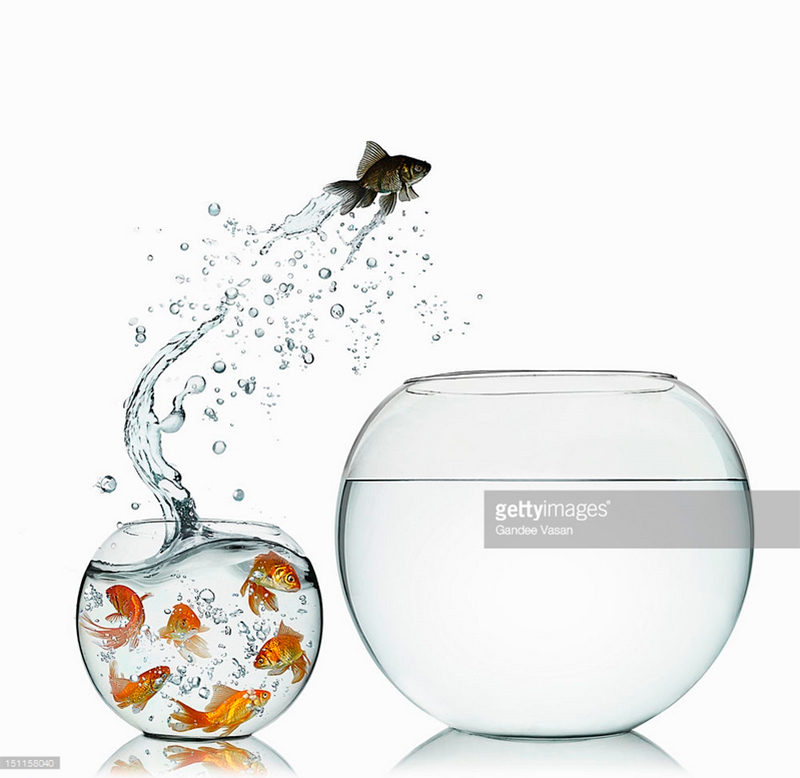Mastermind Tool Three: Mastering Your Mastermind Through Uchi-Soto
In talking about developing the INTJ mastermind, it would be easy to focus on the elements in the cognitive stack that INTJs can easily access. We have already touched on some of them. We use introverted intuition to collect data and dream possibilities. Extroverted thinking to identify solutions and fine tune systems. Introverted feelings act as a gut check, helping us to identify those things that are authentic to our truest selves. But what about extroverted sensing? Sensing is often seen as the unwanted stepchild in the cognitive processes of the INTJ because, as the inferior function in the INTJ cognitive stack, it is the most difficult process to access, and the least developed of all an INTJ’s cognitive processes. Yet, if we want to better develop the INTJ mastermind, it’s important to understand how to use sensing as a tool in developing the INTJ mastermind.
The INTJ’s Guide to Sensing?

Often, sensing is difficult for INTJs because it’s a different way of processing data than we’re used to. Introverted Intuition processes data over a period of time, focusing on patterns, which we then feed to our extroverted thinking to develop conclusions and make decisions. Sensing uses the five senses to gather data from the environment. Sensing types tend to make decisions moment-by-moment based on environmental factors. The two ways of processing data are, in essence, complete opposites of each other. The way in which we typically process data prefers patterns, consistency, time. Se is in the moment, uses concrete environmental cues, and aesthetics. To the logical INTJ, Se seems highly suspect, and certainly not worthy of our trust. Oh, we don’t mind using Se as a balm for bruised feelings. It’s a good excuse to use when eating a whole pint of ice cream (my Se got the better of me), but not for making decisions. Yet, the ability to use Ni and Se at the same time, to integrate opposing perspectives, is a form of integrative thinking. Integrative Thinking was first described by Roger L. Martin, Dean of University of Toronto’s Rotman School of Management. Although Martin’s definition of integrative thinking does not rely on M.B.T.I. as a foundation, it does describe integrative thinkers as having the ability to utilize opposites, or conflicting ways of thinking.
Integrating the Integrative
So how can INTJs develop integrative thinking? This is where uchi-soto comes in. Previously, we described uchi-soto as a dualistic state of being. It is a Japanese word that describes being part of a system, while also being an outsider. INTJs very much fit this concept, often existing as an insider while feeling like an outsider. Nevertheless, uchi-soto can help INTJs develop as systems thinkers and problem solvers.
When you choose to be both a part and apart at the same time, it allows you to overcome peer pressure, and to analyze system dynamics with clear eyes. One of the greatest flaws in many systems is the inability for system members to diagnose and fix system weakness or failure. Study after study has been done on the power of “in” groups, and their ability to wreck productivity, profitability, and hamper success. Yet, an outsider isn’t necessarily qualified to fix issues either. Outsiders can miss important nuances, alienate group members, divide members and, ultimately, create resistance to needed solutions.
Some of the most effective thinkers have existed in a state of uchi-soto. Darwin, Einstein, Tesla, Gates (both Bill and Melinda) . . . that’s not to say that these great thinkers adopted uchi-soto as a practice or philosophy, but when you “THINK DIFFERENT” from the group, you then have the power to transcend group norms. For the INTJ, thinking differently is about mastering your mind, and very possibly, developing the ability to think in an integrative fashion.
The Practice of Uchi-Soto
While uchi-soto, as used in Japanese culture, describes a state of being, when we employ it as a tool in developing your mastermind, uchio-soto is the deliberate choice to use the opposing aspects of your cognitive stack in an integrative way. Because INTJs are introverted by nature, it’s important not to think of uchi-soto as an opportunity to withdraw from others, or to hold yourself apart, lording your separateness as a honor. Like the Roman god Janus, uchi-soto has two faces, or two states. The first state of uchi-soto is being part of the group. When you are practicing this state, you are present in the moment, trying to absorb as much information as possible from the environment around you. It is comfortable for the INTJ to look for patterns; instead, focus on the concrete. Put away cognitive biases, and try to utilize sensory data in conjunction with introverted intuition. Intentionalize your thinking.
The second state of uchi-soto is the outsider state – Introverts crave and need time alone. This necessity has spawned a cottage industry seemingly enthralled with painting INTJs and other introverts as a pack of grumpy old men who would rather kvetch about people than to use alone time productively; yet, many introverts use time spent alone to recharge. For the INTJ mastermind, time spent in solitude is spent in the following ways:
The 3 Rs of Mastermind Uchi-Soto
- Mastermind Recharge – There is no doubt that interacting with others can be draining for an INTJ. All introverts know that time alone, or with another who shares a similar energy resonance, is the only way to recharge. Solitude is a vital to the practice uchi-soto.
- Mastermind Reflection – Concepts such as mindful living are commonly discussed these days. The goal is to live life with clear intent. For the mastermind, reflection is a similar activity, but masterminds focus on synthesis during reflection. For many disciplines, reflection is about letting go of information, for INTJs, reflection is about reviewing, considering, and embracing insights gained from a day of Ni data gathering.
- Mastermind Restructure – Developing your master mind is a lifelong process that requires constant restructuring of knowledge. While many are content to go through life with outdated knowledge, masterminds are in a constant state of updating, and deepening their knowledge. I mentioned Bill Gates as a great thinker. I once read an interview in which he said he took time to disconnect from the world so that he could read broadly, and update his “software.” Our thinking is our software. Just like a computer gets updates, so do we need updates. The world is not in stasis. Change is constant, and our effectiveness is only as good as the software, or thinking, that we use.
There are any number of philosophical disciplines that a woman (or man) can practice to live life holistically and authentically. For INTJs, developing integrative, opposable, intentional thinking is important, as we are cognitively wired to be systems thinkers. While this model of opposable minds and integrative thinking is theory, it seems self-evident that data filtered through our Te would be more insightful were it a combination of the INTJ’s strong Ni with a well-developed Se, thus giving masterminds a powerful third pillar in the “tripod” of integrative thinking. As always, I look forward to any thoughts on this, and would love to hear how other INTJs practice uchi-soto.
And check out the rest of the Mastermind Series here.






This was super interesting and definitely helpful! My Se is super weak, which explains why I’m oblivious to my environment and walk into everything all the time… That ice cream pint? Yeah I don’t know where it went (I ate it all but shhhhh). When I’m in a group I tend to be there physically but soon start to drift in and out of the flow of conversations. Being present is sometimes so difficult that I feel like I need a nap after just 10 minutes (sometimes less). I need uchi-soto in my life — probably best applied if I can fully charge for a good solid solitary 8 hours before any kind of social event.